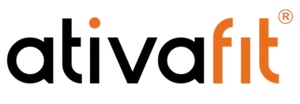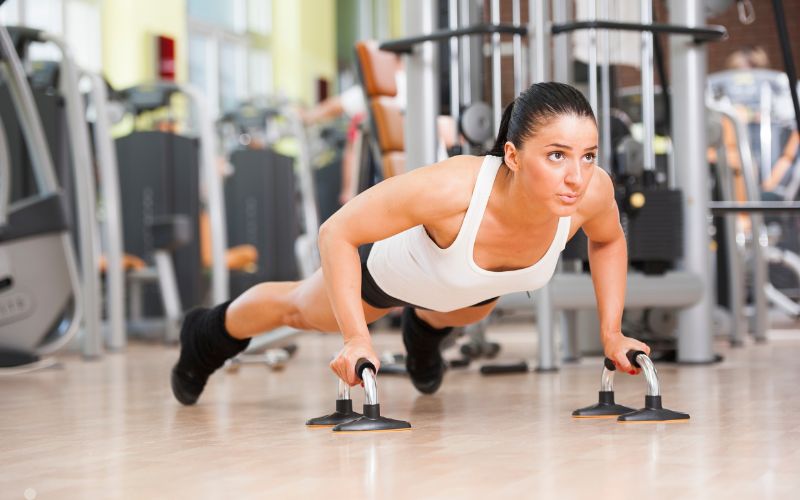Strong, healthy legs begin with lower-body push exercises. These moves push the weight away from your body. These trains work your quads, glutes, and calves, the muscles that help you walk, stand, jump, and run. By avoiding these, you miss out on real strength and balance. Such exercises are simple, so you don't need a gym. You can do them at home with just your body weight or small equipment, such as dumbbells and benches.
The best part? They burn fat, build muscle, and develop a strong back. The athletes use them to improve their speed. Parents use them to remain active. And kids can do them, too! They work regardless of who you are. We'll break down the best squats, lunges, and step-ups. Each section explains how to do them, which muscles they work, and how to make them more complicated as you get stronger. We also provide gear tips and show you how to incorporate them into your week. If you want strong, fast legs and real power, this guide is for you.
What Are Lower Body Push Exercises?
Lower body push exercises involve extending the knee and hip joints to pull weight or your body upward or forward. These exercises train your legs to push against resistance, such as your body weight, a machine, or equipment like dumbbells. Bending and straightening your knees and hips activate the quadriceps, glutes, and calves. They help you stand up, climb stairs, walk, jump, and do other everyday activities that require leg strength and control. Get started with the Ativafit 66 lbs adjustable weight dumbbell set, perfect for home leg workouts.

Lower body push exercises are essential beyond the gym. They imitate real-life actions that everyone does every day. Standing up from a chair, walking uphill, getting off the floor, or picking something up off the ground all depend on these pushing motions. Without training in these moves, your legs may weaken over time, become more susceptible to injury, and increase your risk of falls and joint pain.
You build strength, balance, and can move more easily and with greater power if you do these exercises regularly. They also enhance athletic performance and an active lifestyle. Neither fitness novices nor veterans should skip lower-body push exercises. Consistency with these exercises leads to lifelong strength and confidence.
Benefits of Lower Body Push Exercises
-
Strengthens Major Muscles: Targets the quadriceps, gluteals, and calves.
-
Improves Balance and Stability: Enhances coordination and reduces the risk of falls.
-
Boosts Athletic Performance: Increases power for sports and physical activities.
-
Enhances Functional Movements: Makes daily tasks easier and safer.
Top Lower Body Push Exercises

1. Squats
Muscles Worked: Quads, glutes, hamstrings, calves
How to Perform:
Steady yourself with your feet about shoulder-width apart. Keep your chest lifted and your back straight. Start by bending your knees and hips together as if you were sitting on an invisible chair. Lie down so your thighs are parallel to the ground or slightly lower. The knees should be behind your toes. You can push through your heels to stand back up. Keep your core tight throughout the movement to support your back.
Why It Works:
The best lower-body push exercise is squats. Then, they build strength, improve balance, and engage multiple muscle groups simultaneously.
Variations:
-
Goblet Squat
-
Barbell Back Squat
-
Sumo Squat
2. Lunges
Muscles Worked: Quads, glutes, hamstrings
How to Perform:
Start standing straight. Step forward with your right foot. Lower your hips until both knees are bent at a 90-degree angle. You want your front knee to be positioned just above your ankle and your back knee to be placed just above the ground. Press into the heel of your front foot to return to standing. Switch legs and repeat. Keep your upper body straight and your hands on your hips or at your sides.
Why It Works:
Lunges improve balance, activate core muscles, and work each leg independently. They correct muscle misalignments and improve coordination.
Variations:
-
Forward Lunge
-
Reverse Lunge
-
Walking Lunge
3. Step-Ups
Muscles Worked: Quads, glutes, hamstrings
How to Perform:
Stand before a flat, level bench or platform. Your right foot goes onto the bench. Push through the heel of your right foot and hold yourself up until both legs are straight. Step back up using your left and then your right foot. Maintain an upright torso with a strong core during this movement. Do this for one set of reps, then switch legs.
Why It Works:
The step-ups build unilateral leg strength and are very similar to walking upstairs. Then, they improve hip stability and stretchability.
4. Leg Press
Muscles Worked: Quads, glutes
How to Perform:
Sit on the leg press machine and place your feet shoulder-width apart on the footplate. Hold your back flat against the pad and hold onto the handles. Press the footplate forward by extending your legs, but do not lock your knees. Stop briefly near the top. Slowly lower the weight back down until your knees are at a 90-degree angle.
Why It Works:
With the leg press, you build lower body strength with support. You work the same muscles as in squats, but with less strain on the lower back.
5. Wall Sits
Muscles Worked: Quads, glutes
How to Perform:
Keep your back flat against a wall. Step forward about two feet and then slam into the wall, keeping your knees at a 90-degree angle. The thighs should also be parallel to the floor. Keep your core strong & your back against the wall. Hold that position for 30-60 seconds, or longer if you can. Keep breathing steadily.
Why It Works:
Wall sitting builds muscular endurance in your legs and core. They are for people who want strong legs with little high-impact movement.
Equipment You Can Use at Home

You don’t need a commercial gym to build strong, sculpted legs and glutes. With the right home workout equipment, you can perform effective lower-body push exercises such as squats, lunges, and step-ups right in your living room. These exercises are essential for developing the gluteus maximus, quadriceps, and hamstrings, and Ativafit offers compact, versatile tools that support every movement.
One of the most effective pieces of equipment is a set of adjustable dumbbells. Ativafit’s dumbbells are ideal for home training because they combine multiple weight options into a single space-saving design. As you progress, you can increase the load to continue challenging your muscles. Use them for goblet squats, walking lunges, and other classic lower-body moves that build strength and stability.
To increase variety and intensity, the Pro Adjustable Weight Bench is another smart addition. It allows you to perform Bulgarian split squats, a highly effective unilateral leg exercise that targets the glutes and quads. The bench's adjustable angles also support other movements, such as dumbbell presses and step-ups, ensuring full-body utility beyond just leg day.
To keep your workout area organized, the Home Workout Dumbbell Stand ensures your equipment stays secure and is easily accessible. A clutter-free space not only improves safety but also helps you stay consistent with your routine.
Combine Push and Pull for Full Leg Power

Lower-body push exercises target your front legs, specifically your quadriceps and gluteal muscles. However, to get full strength and avoid imbalance, you must also train the back side. That means pull movements. These target the hamstrings, glutes, and lower back.
Common pull exercises are deadlifts, glute bridge, and hamstring curls. These movements help you lift, stabilize, and control your real body. Skipping them can cause knee or hip pain because your push muscles overpower your pull muscles.
A full-body workout may combine push and pull exercises. For example, pair squats (go) with Romanian deadlifts (pull). Or do a split schedule - push one day, pull the other. As a result, your legs grow evenly, and your body moves more smoothly overall.
Weekly Plan for Beginners
If you're just starting, don't rush. Your muscles need time to get stronger and recover. A beginner plan should include 2 to 3 push workouts per week with at least one rest day in between. You don’t need a long list of exercises—focus on 2 or 3 movements each session and do them with good form.
Here’s a sample weekly plan:
-
Monday:
-
Squats – 3 sets of 10 reps
-
Step-Ups – 3 sets of 8 reps per leg
-
Tuesday:
-
Rest or light cardio (walking or cycling)
-
Wednesday:
-
Lunges – 3 sets of 8 reps per leg
-
Wall Sits – 3 holds of 30–60 seconds
-
Thursday:
-
Rest or upper body strength training
-
Friday:
-
Leg Press (if available) – 3 sets of 12 reps
-
Bodyweight Squats – 2 sets of 15 reps
This plan builds muscle without overload. It helps you learn the correct form and gain control. As you become stronger, gradually add weight or increase the number of sets.
Need gear to follow this plan? Check out Ativafit home gym solutions.
Recommended Equipment for Home Workouts
|
Equipment |
Purpose |
|
Adjustable Dumbbells |
Add resistance to exercises |
|
Support for various exercises |
|
|
Resistance Bands |
Increase tension and variety |
Integrating Pull Movements
For a balanced lower body workout, combine push exercises with pull movements that target the posterior chain:
-
Deadlifts: Strengthen hamstrings and glutes.
-
Glute Bridges: Activate glutes and lower back.
-
Hamstring Curls: Isolate and strengthen hamstrings.
Final Thoughts
Incorporating lower-body push exercises into your fitness routine is essential for building strength, improving balance, and enhancing overall mobility. Start with the basics, practice proper form, and gradually work up to the more challenging moves. These exercises support athletic performance, injury prevention, and everyday functional movements. Engaging your lower body muscles builds a foundation for long-term fitness success and a better quality of life.
Ready to Elevate Your Home Workouts?
Explore Ativafit's range of fitness equipment, designed to support your lower-body training goals. Shop Now and Enjoy 30% OFF with Free Shipping
FAQs
1. What are the best lower-body push exercises for beginners?
Beginners should start with basic movements, such as bodyweight squats, step-ups, and wall sits. These exercises build strength, improve balance, and teach proper form without the need for heavy weights or machines.
2. How often should I do lower-body push exercises?
For beginners, performing 2 to 3 sessions per week is ideal. Ensure at least one rest day between sessions to allow muscles to recover and grow. Consistency and gradual progression are key.
3. Can I do lower-body push exercises at home without equipment?
Yes! Many practical push exercises, such as squats, lunges, and wall sits, require no equipment. For added challenges, you can use dumbbells, a workout bench, or resistance bands.
4. What’s the difference between push and pull lower body exercises?
Push exercises (e.g., squats, lunges) extend the hips and knees, targeting the quadriceps and gluteal muscles. Pull exercises (e.g., deadlifts, glute bridges) contract the hamstrings and glutes, balancing muscle development and preventing injury.
5. Are lower-body push exercises good for fat loss?
Absolutely. These exercises engage large muscle groups, which increases calorie burn and muscle mass, both of which help with fat loss. They also improve functional strength for daily movement and long-term fitness.





